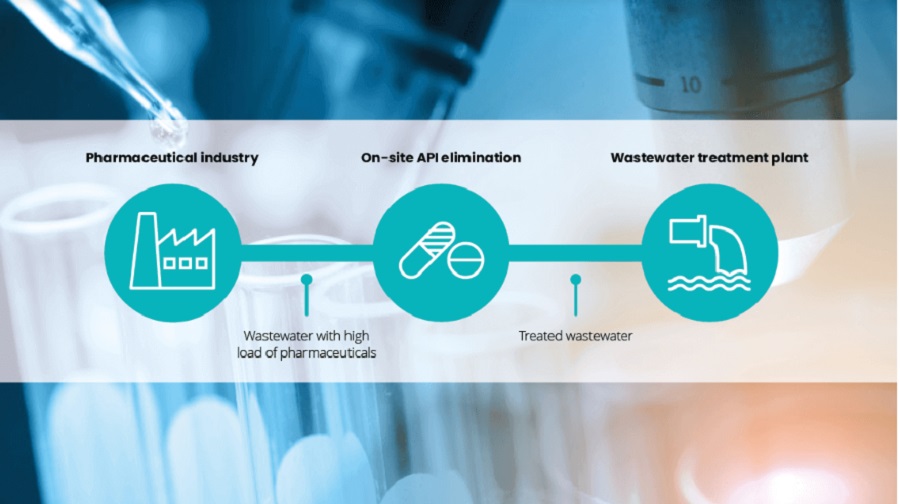Wastewater management is increasingly recognized as a critical component in the surveillance and management of global health and diseases. With the interconnectedness of human, animal, and environmental health outlined by the One Health approach, the role of wastewater in monitoring and responding to public health threats has gained prominence. This document explores the evolution and effectiveness of wastewater-based epidemiology- WBE as a pivotal tool in disease surveillance systems, particularly highlighted during the COVID-19 pandemic.
The Crucial Role of Wastewater in Disease Surveillance
Wastewater, which includes a mixture of domestic, industrial, and agricultural effluents, is a reservoir for various pathogens, chemicals, and biological markers that reflect population health status. Analyzing these components has proven to be effective for early detection and monitoring when it comes to public health threats. The concept of one sample, many analyses in WBE enables comprehensive insights from minimal sampling, making it a cost-effective and efficient method in public health responses.
Impact of Wastewater on Environmental and Human Health
Human populations produce substantial amounts of wastewater, which contains a broad range of chemicals and biota, varying by the source. Sewage, a prevalent form of wastewater, is an inevitable consequence of concentrated human population centres. When sewage enters natural watercourses, it can severely impact environmental health by introducing pathogens and toxic compounds and fostering eutrophic conditions. Furthermore, sewage and other wastewater are sources of microplastics that contaminate aquatic environments, potentially impacting both environmental and human health. Untreated sewage, rich in micro-organisms, varies in range and diversity and poses significant health risks when introduced into natural habitats. These pathogens can directly affect environmental health and have downstream impacts on human health. Examples include the ingestion of faecally contaminated water through activities like swimming or the consumption of crops irrigated with such water.
Wastewater-Based Epidemiology- WBE as an Exemplar When It Comes To Disease Surveillance
The application of WBE in disease surveillance has gained significant recognition. Wastewater serves not only as a pollution source but also as a crucial public health information repository. High levels of pathogens and chemicals in faeces and urine, shed by infected individuals or those on medication, can be detected and quantified in sewage. This allows for community-wide disease surveillance in a relatively non-invasive manner and requires fewer samples to identify health patterns. Historically, WBE has been instrumental in detecting diseases like poliovirus in urban wastewater. During the COVID-19 pandemic, the scope of WBE expanded significantly, facilitating national and sub-national surveillance programs that monitored the emergence of pathogens and the effectiveness of interventions. Additionally, WBE has shown potential in tracking antimicrobial resistance and other endemic human pathogens, providing a comprehensive overview of public health threats. Its ability to detect a wide variety of biological and chemical markers makes it an invaluable tool in the One Health framework, supporting early warning systems and enhancing preparedness and response strategies in public health.
Global Implementation and Challenges of WBE
The global implementation of WBE has encountered challenges, including the need for advanced analytical technologies and substantial infrastructural investments. However, the potential of WBE in providing insights into public health dynamics makes it an invaluable component of the One Health approach. Enhanced sensitivity in detection methods, better data analytics platforms, and international cooperation are essential for standardizing surveillance practices and maximizing the benefits of WBE.
Tripartite and Quadripartite Agreements
On March 21, 2022, the World Organization for Animal Health- WOAH, Food and Agriculture Organization of the United Nations- FAO, World Health Organization- WHO, and UN Environment Program- UNEP signed a landmark quadripartite memorandum of understanding. This agreement aims to strengthen cooperation and optimize the health of humans, plants, animals, and the environment. This framework highlights antimicrobial resistance- AMR as a critical area of focus, demonstrating a global consensus on the need for a coordinated One Health response. AMR serves as a template for wider One Health initiatives, showcasing the importance of a collaborative, multi-sectoral approach to global health threats. These agreements facilitate knowledge sharing, technological advancements, and resource allocation, essential for the effective management of public health threats.
Case Studies in Wastewater Surveillance
Various case studies underscore the effectiveness of WBE in monitoring health threats. Regions utilizing WBE have successfully tracked antimicrobial resistance patterns, aiding global health responses. Moreover, WBE has demonstrated its capability to track the spread of specific pathogens, such as the SARS-CoV-2 variants, potentially reducing the need for equivalent surveillance in clinical samples. This approach provides a less invasive and more economical alternative to traditional disease surveillance methods. Additionally, WBE can be a crucial tool in understanding the prevalence of non-notifiable pathogens like norovirus, which significantly impact community health.
Future Directions and Opportunities
The future of WBE in global health surveillance is promising. Expanding its application to detect emerging zoonotic diseases and new pathogens can provide comprehensive insights into public health threats. The development of more sensitive analytical techniques will further enhance the utility of WBE, establishing it as a cornerstone of global health surveillance strategies. Collaboration among international health organizations and standardization of methodologies are crucial for the effective implementation of WBE across diverse regions.
Conclusive Thoughts
Wastewater management through WBE is a critical component of the One Health approach to global disease surveillance and management. By harnessing the comprehensive data derived from wastewater, health authorities can gain invaluable insights into population health dynamics, enabling informed decisions and effective interventions. As global health challenges evolve, the strategic enhancement of wastewater surveillance will be essential in safeguarding public health in an interconnected world. This detailed analysis not only underscores the importance of WBE in public health management but also highlights its potential to shape future health initiatives across the world.



















